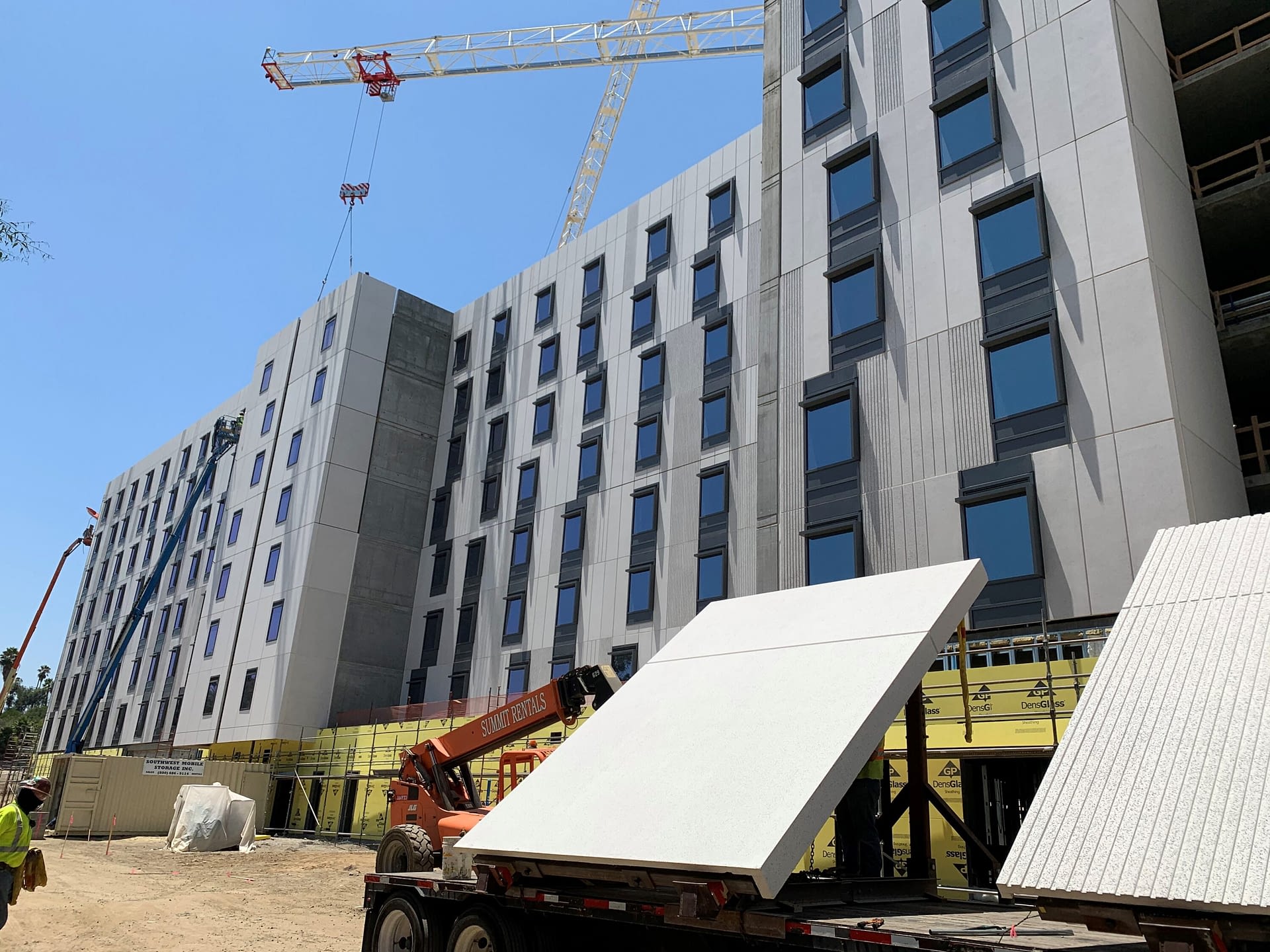Our industry is one of the largest in the world, with around $10 trillion spent on construction related goods and services each year. Yet many of us are still wondering, what is holding back the transformation of the construction industry? Despite the technology, processes and innovation available today, the construction industry continues to fall behind other sectors when it comes to productivity.
Labor shortages, scheduling, high costs, quality concerns and safety all impact the industry’s ability to increase productivity, but the movement toward off-site construction and prefabricated systems can alleviate many of those pains.
The benefits of off-site construction are far reaching; here are the top 5 reasons to consider prefabrication for your next project:

1 Shortens schedules. Off-site construction can deliver a project between 30-50 percent faster than traditional methods1 because construction of the building occurs simultaneously with the site and foundation work. Schedule delays due to weather. Other external factors are a non-issue given that the build takes place in a controlled environment. In fact, 72 percent of contractors surveyed by McGraw Hill stated that the use of prefabrication decreased project schedules by more than a week, and 37 percent stated it reduced the schedule by 4 weeks or more.2
2 Delivers early cost certainty. By engaging in the design process early, the project’s design team and other key players align on project requirements from the beginning. It is this collaboration and transparency that gives all parties visibility into factors affecting the bottom line of the project’s budget
3 Reduces waste. According to the U.S. Bureau of Labor Statistics, when comparing construction to manufacturing, 57 percent of activities in construction are wasteful and non-value adding. These are activities that are not compensated. However, 62 percent of manufacturing activities are value adding. Replacing the wasteful elements of construction with manufacturing benefits through off-site construction can remove waste and increase value for projects.3 In fact, research shows that 77 percent of off-site construction users report a decrease in construction site waste4.
4 Saves on labor costs and solves problems related to the skilled labor shortage. With a labor shortage among us, prefabrication enables work to be done by fewer, highly skilled workers. Off-site construction allows skilled craftsmen a safer and more productive place to do their job and quality can be monitored throughout the production process.
5 Reduces site impacts. With fewer workers and equipment, there is reduced traffic on the site, fewer staging areas for materials and worker parking and as a result, increased jobsite safety.


